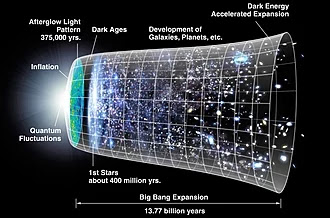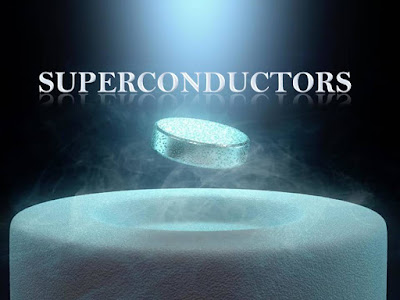INTRODUCTION
Semiconductor is a material whose conductivity lies between a conductor (Generally metals) and an insulator (Glass, wood etc..). Semiconductors can be pure elements like silicon or germanium or other elements with impurities whose no. of electrons remains same as that of silicon, germanium etc.. The behaviour is opposite to that of a metal i.e their resistance decreases as the temperature increases. Their conducting properties can be altered to give best results by introduction of impurities into the structure, this process is called doping. Semiconductors can have a range of useful properties like Showing variable resistance, Sensitivity to light or heat which makes them useful for making sensors, amplification, energy conversion etc.. They are widely used in making Transistors, laser diodes, integrated circuits, computer chips, solar cells etc.. The developments in semiconductor technology during the past 50 years have made electronic devices smaller, faster and more reliable.
The Energy bands of the semiconductors have a little gap in between the valence band and conduction band called as band gap. This Band gap is larger in Insulators as they are non conductive in nature. In metals the valence band and conduction band overlaps hence making them highly conductive. From this it is said that when the temperature increases the conductivity of Semiconductors increases and at a point they behave as metals, it is also said that at extremely high temperatures even insulators can conduct electricity. The Band gap comparison of metals, semiconductors and insulators is shown below.
CLASSIFICATION
The semiconductors are broadly classified into two groups on the basis of presence of other elements or impurities, they are known as Intrinsic semiconductors and Extrinsic semiconductors.
Intrinsic Semiconductors
Intrinsic Semiconductor is a pure semiconductor without any impurity or a dopant present in it. The number of charge carriers is determined by the properties of material itself. In Intrinsic semiconductors the number of holes (p) is equal to number of electrons (n). This case can also occur after doping if it is doped with amount of holes or electrons which make them equal. The semiconductor still remains intrinsic as it posses those properties. Examples include Silicon, Germanium etc..
Extrinsic Semiconductors
Extrinsic Semiconductor is an impure semiconductor which is doped with impurities during the manufacturing of the material. The purpose of adding impurities to the semiconductor is to give it different electrical properties than the pure intrinsic semiconductors. The properties of the Extrinsic semiconductors depends on the doping element and the majority of the charge carriers (Holes or Electrons). The valency of the material is either trivalent (3 electrons in outer shell) or pentavalent (5 electrons in the outer shell) thus dividing it again into two groups, i.e the N-type semiconductors and the P-type semiconductors. Generally elements like Silicon and Germanium are used for doping as they have four electrons in their outer shell.
N-type semiconductors are formed when the pure semiconductor is doped with a Pentavalent impurity like Phosphorous (P), Arsenic (As), Antimony (Sb), or Bismuth (Bi). Pentavalent elements are those which have five electrons in their outer shell. When these impurities are added to the semiconductor material, four electrons of silicon forms bonds with four electrons of pentavalent impurity leaving behind one electron in every atom. In this way the semiconductor gains huge amounts of free electrons for carrying the charge. Since electrons carry most of the charge the semiconductor is negatively charged. This impurity is called an electron donor because it is ready to give a free electron to a semiconductor. In this semiconductor the majority charge carriers are electrons and minority charge carriers are holes thus giving it the name n-type semiconductors. The amount of the impurity is less compared to the semiconductor material and its characteristics can be changed by changing the amount of impurity (dopant).

P-type semiconductors are formed when the pure semiconductor is doped with a Trivalent impurity like Boron (B), Aluminium (Al) or Gallium (Ga). This type of impurity when added to the material forms three bonds with silicon and leave behind a hole in place of the fourth electron in every atom. This results in semiconductor gaining huge amount of holes for carrying the charge. Since holes are carrying most of the charge the semiconductor is positively charged. This impurity is called an electron acceptor as it accepts the electron from the element creating a vacancy which can be called as a hole and act as a positively charged particle. It is called a p-type semiconductor because the majority charge carriers are holes and minority charge carriers are electrons. The amount of impurity added is very less compared to the material, by changing the amount of dopant the characteristics of the semiconductor can be changed.
PROPERTIES
Semiconductors are known to conduct electricity but at a small rate. The process of doping makes it easier to conduct electricity and also to have a control on it. This also makes variable conduction of electricity possible. When doping is done on a higher level the semiconductor acts as a metal and its conductivity increases and decrease in conductivity is a natural property of semiconductors. On this basis many electrical devices came into existence like Transistors,Integrated Circuits, Diodes etc..
A p-n junction is formed when two differently doped semiconductors are joined together. When the p-type and n-type semiconductors are joined this results in formation of a junction between the two where the exchange of charge carriers (Holes and Electrons) takes place. The transfer occurs until the material comes in Equilibrium condition. This junction lies between the material which consist of equal no. of holes and electrons, the p and n type semiconductors act as a positive and negative end of the diode respectively. This property is used in manufacturing rectifiers in DC power supply, detectors, circuits in computers, radios etc..
In certain semiconductors, when a p-n junction diode is formed and an electric potential is supplied, a non equilibrium condition is formed at the junction. The electrons get excited and they relax by emitting light instead of heat. This property led to the invention of Light Emitting Diodes (LED) which are a better alternative to save power consumption than the regular CFL bulbs. They require less power and are more brighter than regular bulbs. This type of diodes are also used in making Laser sources. This type of laser sources are very reliable, low manufacturing cost and have a long life.
Some Semiconductors also have property of converting light to electricity, the process is also known as photovoltaic effect. This makes them the basic material used in photovoltaic devices like photodetectors, solar cells etc.. The Semiconductor material is attached to electrodes which are connected to a circuit, when the semiconductor material is exposed to light the current flows through the circuit. This method of producing electricity is very cost effective and Eco-friendly and is thus replacing present power sources.
- Thermal Energy Conversion
As we know semiconductors when applied a voltage produces heat to maintain Equilibrium condition, some semiconductors produces voltage when applied heat or thermal energy. This effect of converting heat energy directly into electricity is called as a Thermoelectric effect. Semiconductors have large Thermoelectric power factors which makes them useful in thermoelectric generators. They are very useful for generating power in areas where much heat energy is produced.
So this was some basic information about semiconductors. Research is still being carried on to make semiconductors even more efficient and increase the areas of its use. The field has expanded a lot in past years and is believed to get more expanded. Many discoveries are taking place and there's much more to say on this topic but i think this much is enough to give you a basic idea about semiconductors.
Comment Your Views and Suggestions:)







Comments
Post a Comment